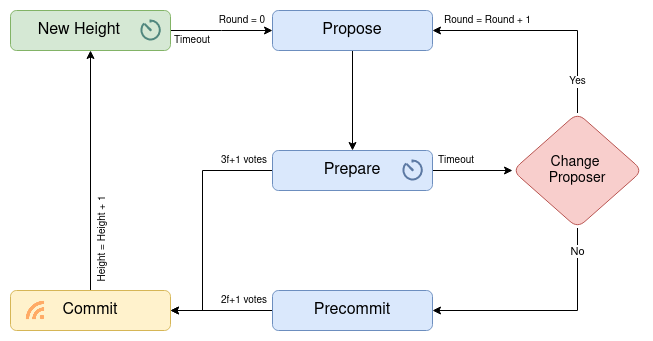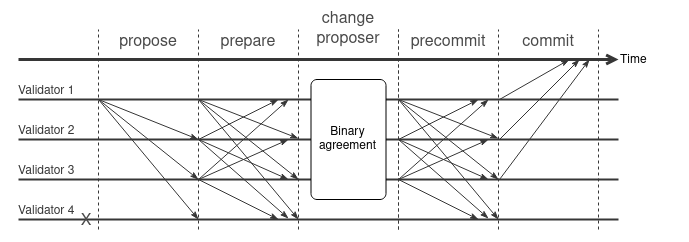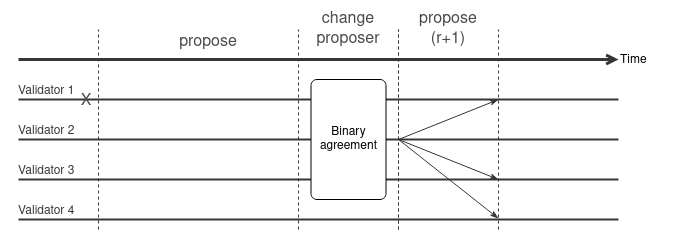PIP-10: Fast agreement consensus protocol
| Authors | B00f (@b00f) |
|---|---|
| Discussion | View Discussion PIP-10 |
| Category | Core |
| Created | 2023-09-25 |
Table of Contents
Abstract #
This proposal suggests an enhancement in the consensus protocol in which any non-faulty validator can commit a block upon receiving $3f+1$ valid $\text{PREPARE}$ messages.
Figure below shows the overview of the protocol.

Motivation #
In practical scenarios, most validators in the network function correctly. However, occasional network delays can affect the timely receipt of messages. If a validator receives sufficient valid $\text{PREPARE}$ messages, specifically $3f+1$ of them in a timely manner, it can commit the proposed block during the Prepare step.
This fast agreement path potentially decreases the number of network messages and the block finalization time, eliminating the need for the $\text{PRECOMMIT}$ step and broadcasting for almost $n^2$ messages in the Precommit phase.
Specification #
In each height, the consensus protocol is executed by $3f+1$ validators, and execution is organized into a sequence of rounds. Within a round, a single validator is designated as the proposer responsible for collecting transactions and creating a proposal block. The proposer then broadcasts a proposal message that includes the proposal block to other validators. Other validators, once they receive the proposal message, validate it and broadcast the $PREPARE$ message to other validators.
Fast Agreement Path #
In the fast agreement path, once a validator receives $3f+1$ $PREPARE$ messages from other validators including itself, it commits the block, clears its message log, and moves to the next height.
Figure below shows the communication patterns for the fast agreement path.

Change Proposer Path #
If the network, proposer, or some validators are faulty, the validators might not receive responses from all $3f+1$ validators, causing them to become stuck. The change-proposer phase is triggered by timeouts and prevent validators from waiting indefinitely for the proposal to be committed.
The change-proposer phase is a binary agreement, and each validator begins with an initial value $v_i \in \{0,1\}$ that is biased toward zero. If a correct validator has received more than $2f+1$ Prepared messages, the initial value should be set to zero; otherwise, it should be set to one. The outcome of the binary agreement determines whether the proposer should be changed or not. If the validators agree to not change the proposer, they continue the agreement protocol by moving to the precommit step. Otherwise, they increase the round number, and the next proposer proposes the new proposal.
Figure below shows the communication patterns for the agreement path when one validator is faulty.

Figure below shows the communication patterns for the agreement path when the proposer is faulty.

Block certificate #
The block certificate should be modified as follows:
If the most significant bit of the round number is set to 1, the certificate is issued at the prepare step. It should then be validated with $3f+1$ votes from the validators in the Prepare step. If set to zero, it should be validated with $2f+1$ votes from the validators in the Precommit step.
References #
Copyright
Copyright and related rights waived via CC0.